#Forensic Science Techniques
Explore tagged Tumblr posts
Text
A Beginner's Guide to Forensic Chemistry: From Triggered to Convicted?
What is Forensic Chemistry? Forensic chemistry is a specialized area of forensic science that uses chemistry to examine and identify materials connected to criminal investigations. Analyzing materials discovered at crime scenes, such as drugs, poisons, blood, and gunpowder, is part of this. Forensic chemists play a vital role in helping law enforcement uncover the truth. They use scientific…
#Chemical Analysis in Forensics#Crime Scene Investigation#Forensic Chemistry#Forensic Science Techniques#How forensic chemists solve crimes#Role of Chemistry in Criminal Justice
0 notes
Text

OH THAT IS SOOO US @thatonegeekygirl WITHOUT A DOUBT!!! 🫶🫶🫶
i am indeed very insanely ryan bergara coded (anxious, talkative, overthinking, easily distracted, and interest-driven!), while you are SO extremely shane madej coded in my opinion lmao. (gentle, creative, accepting, comforting, and also interest-driven!)
SO YES! in summary, we make the best duo ever aurora! <3
#this post can simply be summarized down to: aly 🤝 aurora#we also have that ryan and shane comfort thing going on lmao#the amount of times i’ve been very nervous about something and made a comment/post about it#and then you respond and i start thinking “oh wait oopsies aurora is right i am too in my head about this”#example 1: you giving me techniques to manage my anxiety before my competition#example 2: forensic science competition when the girl had a camera#example 3: you soothing my anxieties about my writing!#and in exchange i always make sure to compliment you on your creativity! just like ryan does shane!#in summary: us and the ghoulboys are certifiably the best duos! <3
15 notes
·
View notes
Text
Forensic science is the cornerstone of modern crime-solving, transforming mystery into clarity through scientific techniques. Crime scene investigation (CSI) involves meticulously collecting, preserving, and analyzing evidence to piece together the truth. From fingerprint analysis and DNA profiling to blood spatter interpretation and digital forensics, each step plays a vital role in uncovering the story behind a crime scene.
This blog offers an in-depth exploration of CSI, covering tools, methodologies, and their real-world applications. Learn how experts reconstruct events using forensic photography, chemical analysis, and ballistic studies, ensuring no clue goes unnoticed. This guide equips you with knowledge about the fascinating intersection of science and justice.
1 note
·
View note
Text

Bites on Roman Gladiator Bones Prove Combat With a Lion
Bite marks found on the skeleton of a Roman gladiator are the first archaeological evidence of combat between a human and a lion, experts say.
The remains were discovered during a 2004 dig at Driffield Terrace, in York, a site now thought to be the world's only well-preserved Roman gladiator cemetery.
Forensic examination of the skeleton of one young man has revealed that holes and bite marks on his pelvis were most likely caused by a lion.
Prof Tim Thompson, the forensic expert who led the study, said this was the first "physical evidence" of gladiators fighting big cats.
"For years our understanding of Roman gladiatorial combat and animal spectacles has relied heavily on historical texts and artistic depictions," he said.

"This discovery provides the first direct, physical evidence that such events took place in this period, reshaping our perception of Roman entertainment culture in the region."
Experts used new forensic techniques to analyse the wounds, including 3D scans which showed the animal had grabbed the man by the pelvis.
Prof Thompson, from Maynooth University, in Ireland, said: "We could tell that the bites happened at around the time of death.
"So this wasn't an animal scavenging after the individual died - it was associated with his death."




As well as scanning the wound, scientists compared its size and shape to sample bites from large cats at London Zoo.
"The bite marks in this particular individual match those of a lion," Prof Thompson told BBC News.
The location of the bites gave researchers even more information about the circumstances of the gladiator's death.
The pelvis, Prof Thompson explained, "is not where lions normally attack, so we think this gladiator was fighting in some sort of spectacle and was incapacitated, and that the lion bit him and dragged him away by his hip."
The skeleton, a male aged between 26 and 35, had been buried in a grave with two others and overlaid with horse bones.
Previous analysis of the bones pointed to him being a Bestiarius - a gladiator that was sent into combat with beasts.
Malin Holst, a Senior Lecturer in Osteoarchaeology at the University of York, said in 30 years of analysing skeletons she had "never seen anything like these bite marks".

Additionally, she said the man's remains revealed the story of a "short and somewhat brutal life".
His bones were shaped by large, powerful muscles and there was evidence of injuries to his shoulder and spine, which were associated with hard physical work and combat.
Ms Holst, who is also managing director of York Osteoarchaeology, added: "This is a hugely exciting find because we can now start to build a better image of what these gladiators were like in life."
The findings, which have been published in the Journal of Science and Medical Research PLoS One, also confirmed the "presence of large cats and potentially other exotic animals in arenas in cities such as York, and how they too had to defend themselves from the threat of death", she said.
Experts said the discovery added weight to the suggestion an amphitheatre, although not yet found, likely existed in Roman York and would have staged fighting gladiators as a form of entertainment.
The presence of distinguished Roman leaders in York would have meant they required a lavish lifestyle, experts said, so it was no surprise to see evidence of gladiatorial events, which served as a display of wealth.
David Jennings, CEO of York Archaeology, said: "We may never know what brought this man to the arena where we believe he may have been fighting for the entertainment of others, but it is remarkable that the first osteoarchaeological evidence for this kind of gladiatorial combat has been found so far from the Colosseum of Rome, which would have been the classical world's Wembley Stadium of combat."
By Alex Moss and Victoria Gill.




#Bites on Roman Gladiator Bones Prove Combat With a Lion#Driffield Terrace in York#roman gladiator#roman gladiator cemetery#ancient artifacts#archeology#history#history news#ancient history#ancient culture#ancient civilizations#roman history#roman empire
81 notes
·
View notes
Text
Alegría v Caruso: Day 2, Pt. 1

Everybody was seated, waiting for the trial to resume after what seemed like a never-ending weekend. Seriously, it felt like 4 months (and 7 days, if we want to be exact).
While Erick and Ángel felt a little uneasy after how Day 1 ended, Noemí was rather optimistic. She would feel comforted knowing Dulce was on the right side, even if the jury made a decision against her.
Lewis, however, felt pretty guilty for not sharing his suspicions regarding Caruso. In his defense, most people probably wouldn't like being told, "Your partner is a shady, lying jerk. And he squeezed my hand too hard."
When Lewis confessed this to Dulce, she forgave him. It didn't matter anymore. Yeah, maybe she wouldn't have believed Lewis, and that thought was unsettling.

On the other side of the room, Isabela was silently scolding Caruso for... reasons.
Hold on, were they trying to match outfits like Dulce and Antonio? The audacity when their claim was Caruso's "originality"...
It didn't take long for Caruso to be spared from the continuous bickering. The judge walked into the courtroom and took a seat, making Isabela settle down.
"This court is now in session," he announced. It was showtime.

Antonio stood up from his seat and walked over to the judge's bench.
“Your Honor, today we present a crucial piece of evidence: Ms. Alegría’s personal notebook, containing years’ worth of handwritten notes and original recipes.”
Chatter was heard around the room. What an interesting development.

Isabela shot up from her seat. “Objection! The notebook could have been fabricated over the weekend.”
A valid concern, but the judge was much too intrigued. “Overruled. We will hear the evidence first.”
Isabela remained firm, determined to cast doubt. “But, Your Honor. The defense was not made aware of this evidence before today.”
“Ms. Alegría could not find it, and we were unsure it would be found on time," Antonio explained.

That is technically the truth. Dulce was impressed with Antonio's ability to say just enough.
Antonio added, "Given that it contains important material to this case, we ask for it to be admitted."
“I will allow it.” His nod signaled for Antonio to continue.

“This notebook contains the ingredient lists and handwritten revisions. Momentarily, the ink analysis expert will verify when these entries were made.”
The screens behind him showed photographs of the pages from the notebook. The jurors nodded listened attentively.


Dr. Nadia Galecki, a forensic document analyst, was called to the stand.
Antonio began. "Dr. Galecki, can you explain how you determined the authenticity of this piece of evidence?"
"Using chemical testing, we conducted an ink dating analysis to determine when the ink was applied to the pages. The compounds in ink change over time, and by measuring these changes, we can estimate how long ago something was written."

"And what conclusions did you draw?"
"Based on our tests, the majority of the entries predate Ms. Alegría's relationship with Mr. Caruso by several years—some, nearly a decade."
The people in the courtroom whispered, and Caruso could not believe what was happening. How is he so good at this? He can't be real.
"Thank you, Dr. Galecki. No further questions." Checkmate.

It was Isabela's turn. "Dr. Galecki, ink dating analysis is not an exact science. How precise are these results, really? Could there be a margin of error of weeks? Months? ...Years?"
The analyst seemed to take offense to that. "It is a highly reliable method. Science is never absolute, but our tests can generally determine whether the ink was applied within a certain time frame. We use multiple techniques to ensure accuracy."
"But you also found that some entries were written after Ms. Alegría met Mr. Caruso, right?"
Dr. Galecki did not falter. "Yes, but it does not change the fact that the majority of the notebook is older than their relationship."
Isabela frowned.

Meanwhile, Dulce was pleased with how things were going. She hoped her joy wasn't too obvious. Winning was always fun.
Start from the beginning (Gen 2)
Previous | Next
#Dulce Alegria#Noemi Alegria#Erick Wade#Angel Alegria#oc mlt: Antonio Romero#oc mlt: Caruso#oc mlt: Isabela Campos#tjolc gen 2#tjolc#alegria legacy#matchalovertrait#joy of life challenge#joy of life legacy#the sims 4#ts4#sims 4#sims 4 legacy#tjol challenge
102 notes
·
View notes
Text
Crime scene investigation may soon become significantly more accurate and efficient thanks to a new method for detecting gunshot residues. Researchers from the groups of Wim Noorduin (AMOLF/University of Amsterdam) and Arian van Asten (University of Amsterdam) developed the technique that converts lead particles found in gunshot residue into light-emitting semiconductors. This method is faster, more sensitive, and easier to use than current alternatives. Forensic experts at the Amsterdam police force are already testing it in actual crime scene investigations. The researchers published their findings in Forensic Science International on March 9.
Continue Reading.
61 notes
·
View notes
Text
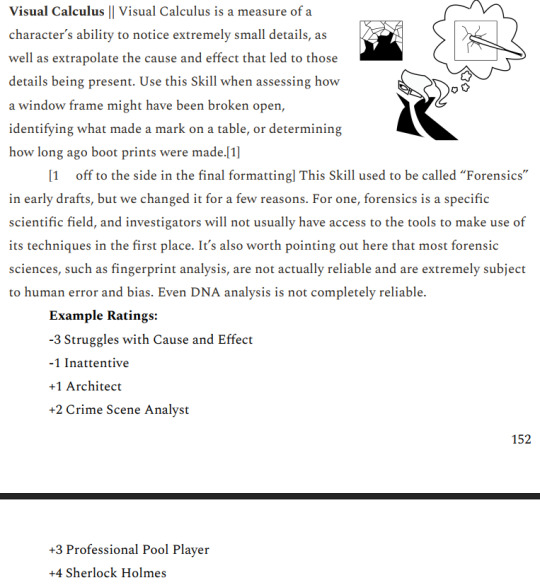
Visual Calculus Skill from Eureka: Investigative Urban Fantasy. Every investigator has the same 21 Skills, which are set at a rating from +3 to -3 depending on how good or bad they are at those things. Before applying any Traits, an investigator's skill ratings have to add up to net 0.
Visual Calculus || Visual Calculus is a measure of a character’s ability to notice extremely small details, as well as extrapolate the cause and effect that led to those details being present. Use this Skill when assessing how a window frame might have been broken open, identifying what made a mark on a table, or determining how long ago boot prints were made.[1]
[1 off to the side in the final formatting] This Skill used to be called “Forensics” in early drafts, but we changed it for a few reasons. For one, forensics is a specific scientific field, and investigators will not usually have access to the tools to make use of its techniques in the first place. It’s also worth pointing out here that most forensic sciences, such as fingerprint analysis, are not actually reliable and are extremely subject to human error and bias. Even DNA analysis is not completely reliable.
Example Ratings:
-3 Struggles with Cause and Effect
-1 Inattentive
+1 Architect
+2 Crime Scene Analyst
+3 Professional Pool Player
+4 Sherlock Holmes
#indie ttrpg#disco elysium#ttrpg#sherlock holmes#sherlock#rpg#eureka: investigative urban fantasy#eureka#ttrpg tumblr#ttrpg community#indie ttrpgs#tabletop rpg#ttrpgs#urban fantasy#detective#mystery novel#mystery#rpgs#tabletop#crime rpg
89 notes
·
View notes
Text
Fan Labor Offerings
We've had 67 offers for fan labor so far - everything from SPag and cheerleading, to translations in 5 languages, to sensitivity reading for head injuries, to specialist knowledge of camp counseling and US law, to offers for custom AO3 skins and podfic editing - and LOADS more.
Under the cut you'll find the full list, but just as a preview we've got:
Translation in five different languages
Specialists offering their unique knowledge on 15 professions, 15 hobbies, and a variety of medical conditions and subcultures
Sensitivity readers on ten different topics, mainly medical issues and LGBTIA+ topics
Cultural knowledge of eight areas of the US plus seven other countries and two religions
Editing a variety of mediums
Read on for the full list - and stay until the end for some of the more unique offers!
Specialist knowledge offers:
Professional- Academia (US) American legal system/bar exam/practicing law Camp counselor Civil engineering Drafting legislation for local government (American) Employment in movie theaters Forensic science/crime scene investigation/autopsy Funeral services/embalming Medical field expertise: operating room nurse, inpatient/outpatient, emergency and wards Public libraries Small business/environmental/real estate/contracts/and general business law (American) Social media and TV/Film production work Theatre Theme/amusement park (there is a difference!) operations
Medical issues including: Ehler Danlos, surgery, escoliosis, partial disability, poor eyesight, migraines, diabetes, stroke, intellectual disabilities, physical disabilities, and experience with hospitalization
Educational info on charter schools, language immersion education, and US public education
Hobbies- Camping/hiking Chess Choir Classical music, specifically opera Film Geocaching Historical literature Horse care & general equestrian activities Music Musical instruments (guitar, ukulele, handbells) Pet ownership of multiple species/breeds Sewing, tailoring, alterations, fashion history and flat pattern-making Sports culture (US) Textile crafts (esp knitting and mending) Voice and vocal technique
Subcultures including BDSM and leather/kink, Goth, and j-fashion.
Sensitivity reading offers:
ADHD Aromanticism Asexuality Autism Blindness including: accessibility, Braille education, experience with ablism and activism, experience with assistive devices, guide dog use, rehabilitation services, navigating with or without white cane Butch/femme (esp. stone) Genderqueer Head injuries LGBTQ+ Transmasc/non-binary gender identities and/or social/medical/legal gender transitions
Cultural knowledge offers:
Australian American Chinese diaspora British culture/history Catholicism China Columbian culture/Latine culture German culture Judaism Mexican culture United States (Baltimore, Maryland; Illinois; southern California/greater Los Angeles; Great Lakes region; Pacific Nortwest; Upper Midwest; small town/rural college) Taiwan
Translation offers:
Catalan/English French/Catalan French/English German/English Spanish/Catalan Spanish/English Spanish/French Spanish (Latin-American)/English Limited English/Classical Latin
Other fan labor offers:
Typesetting a fic for printing/binding Commenting! Podfic editing Historical research assistance/developing research methodology Book review Custom AO3 workskin Basic AO3 coding Podfic mentoring/tutoring/coaching using Audacity
You guys know So Much. We're so lucky you're all so willing to share!
Want to join us? Sign ups are open until Sunday Feb 2!
86 notes
·
View notes
Text
Do You Know This (non-canon) Autistic Character?
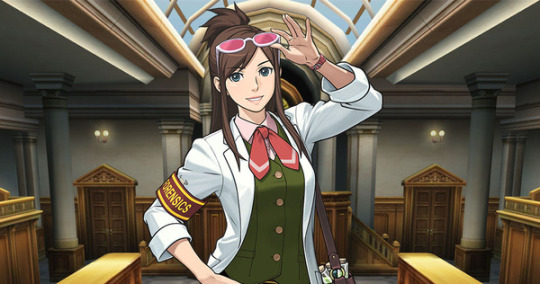
Propaganda:
Ema has what feels like a special interest in forensic science (she's incredibly obsessive about it and takes every chance she gets to infodump about it). She introduces Phoenix Wright to forensic techniques in her first appearance. In her second appearance, she appears as a detective, and is not happy about her job, to the point she does forensic investigation anyway despite not having the authority to.
In her third appearance (which canonically happens before her second appearance), she comes back to do some forensic stuff and mentions that she's studying forensics in Europe. In her fourth appearance, she's finally become a forensic investigator, and is significantly happier than when she was a detective. Also notable is that during her time as a detective, to get her out of a slump, all anyone has to do is ask about forensic investigation techniques and she gets incredibly excited to explain.
#Ace Attorney#Ema Skye#autistic representation#autistic characters#poll#polls#tumblr poll#autism#asd#character poll#character polls#autism spectrum disorder#autistic#autistic vibes#autistic spectrum#autistic special interest#neurodiversity#polls on tumblr#tumblr polls#random polls#poll blog
23 notes
·
View notes
Text
LAB EXPERIMENT
Activity title: Lab experiment
Type of activity: activity
Duration: two hours
Learning outcomes:
-Identify own strengths and develop areas for growth -Demonstrate that challenges have been undertaken, developing new skills in the process -Demonstrate the skills and recognize the benefits of working collaboratively
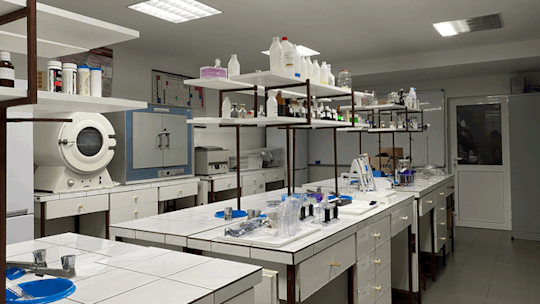
On friday, our group visited PMF to learn about the process of gel electrophoresis. We observed how this technique is used to separate DNA, RNA, or proteins based on their size and charge. The demonstration included extracting DNA from a flower, preparing the gel, loading the samples, applying an electric current, and analyzing the results. We also gained insight into its applications in genetic research, forensics, and medical diagnostics. It was a great opportunity to see the process firsthand and understand its significance in scientific studies.
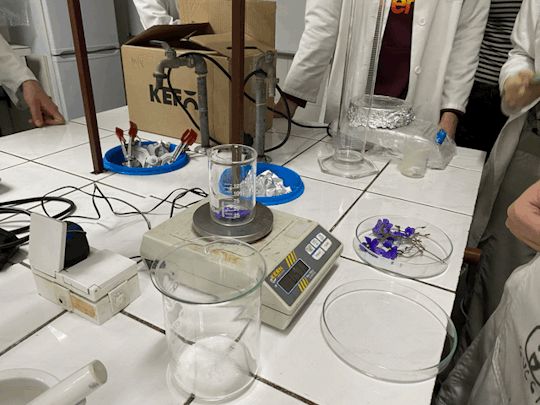
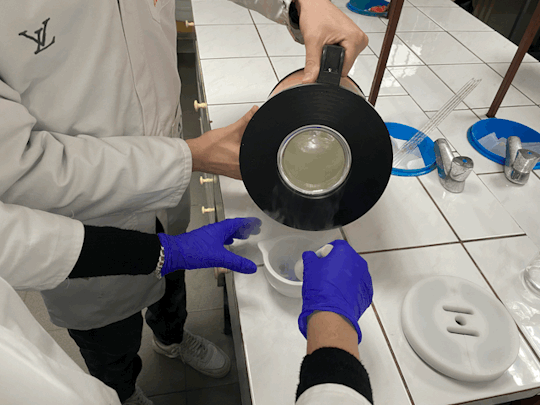
Reflection: We can reflect on this activity by considering what we learned, how it expanded our understanding of science, and how it might influence our future interests.
23 notes
·
View notes
Text
From Ions to Insights: How Mass Spectrometry is Transforming Modern Research
🌟 Introduction: What is Mass Spectrometry and Why Is It Important? Mass spectrometry is a special tool that scientists use to study different substances. It helps find out what a material is made of by checking its smallest parts—molecules and atoms. Using this technique, researchers can understand the weight, type, and structure of different compounds. That’s why mass spectrometry is now one of…
#Applications of mass spectrometry#How mass spectrometry works#Mass Spectrometry#Mass spectrometry in drug discovery#Mass spectrometry in forensic science#Types of mass spectrometry techniques
0 notes
Text
Lookism Characters as Archaeologists pt.1
Jake, Eli, Johan, Samuel, Daniel, Yujin/Eugene
Jake
Specialization: Classical Archaeology
He romanticizes being an archaeologist, which makes working with him a dream job.
He knows all his workmates names and remembers all the students who spend a week on internship with his team.
He's straightforward and does what he thinks is more suitable on his research even if it means not keeping some strata in order to reach the most ancient one.
He does not teach, prefers to spend the day on the fields.
Has written some cool articles about remarkable warriors.
Didn't want to be an excavations' director but somehow ended up being a good one.
There's a rumor that he infiltrated in a black market in order to retrieve some stolen archaeological artifacts from smugglers.
Eli
Specialization: Forensic Archaeology
(Duties of archaeologists in this field of archaeology include collecting evidences like human burials, artifacts, footprints, tool-marks, etc., and trying to figure out the situation in which a particular crime might have happened; and to ascertain the influences on the remains of external factors that may have disturbed the crime scene).
His cold mindset made him the best on this field.
He teaches at the laboratories and side eyes the students who find gross touching real bones.
Keeps a file of plenty of different types of burials, sacrifices and traces of violence of the bones.
Shares laboratory with Johan.
He gets hyperfocused when a crime scene seems to be impossible to decipher.
He works more on the laboratory than the field.
When he was a student he destroyed a lot of evidence by mistake, improved trough practice.
Johan
Specialization: Zooarchaeology
(Also known as faunal analysis, is a branch of archaeology that studies remains of animals from archaeological sites).
There's a rumor that he cried when he found out a 4000-year-old dog died by a human weapon.
He's the best at his field but awful at tutoring, he doesn't have the patience to deal with students so Eli and other lab workers have to replace him on the teaching.
Has to be reminded once in a while that archaeology is a collaborative and multidisciplinary discipline.
Has made some internships cry.
He is the one who causes less damage to the bones making some restorers jealous.
Zack, Jake and Daniel forced him to participate on their excavations.
Samuel
Specialization: Prehistoric Archaeology
Joined this field because it was the hardest but the most well paid, doesn't mind the toxic ambience, he fuels it.
He is the strictest, never accepts he's wrong and avoids teaching newbies.
There's a rumor that he started a fistfight with Eli because of a debate about a burial ceremony.
He has good eye on the cutting techniques.
You have an only opportunity to make a good impression on him, if not you can say goodbye to work with him.
Talk about the survival methods and you have his attention.
Daniel
Specialization: Ethnoarchaeology
(Ethnoarchaeology is the science that deals with the ethnographic investigation of living communities in order to acquire knowledge of the past).
Joined motivated to understand the human conduct and because he was a fan of Indiana Jones since a kid.
His workplace is really tidy and organized, has a shelf with ceramics and fossils displayed on his office, so students can admire when tutoring.
None knows why, but he always ends up on the other archaeologists messes (infiltrated with Jake in a black market, got caught in the Samuel vs Eli fistfight, went to ask Gun for an artifact and ended up working with him).
A lot of students joined archaeology because had a crush on him.
He's a rookie yet has made a name for himself inside the community.
Eugene
Specialization: Quantitative Analysis Archaeology
None knows why there's this branch and why he does it, yet since he's the only one who knows how to use it, everyone depends on him.
Has never stepped in a field nor grabbed a shovel.
Loves to fail his students, says things like "you can try next year, if you succeed".
There's a rumor that his predecessor confused him for a student on his first day of teaching, and he cut his (the predecessor) car's brakes.
Only corrects his students essays so he can diss them.
36 notes
·
View notes
Text
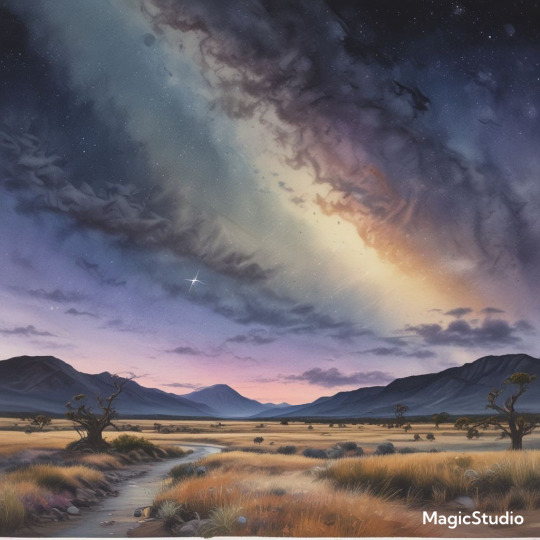
Uncharted Skies: Exploring the Mystery of UAPs
The study of Unidentified Aerial Phenomena, or UAPs, has long been a topic of fascination and debate, with some approaching the subject with skepticism and others dedicating themselves to understanding these enigmatic events through a scientific lens. Dr. Kathleen Murray, a scientist with a background in forensic science, geoscience, and education, brings a unique perspective to the field, combining her expertise with a passion for nature and the universe. Her journey into the world of UAPs began with a remarkable sighting in 1997, where she witnessed a small, stylized object moving within an equilateral triangle of stars in the desert, an experience that sparked her curiosity and set her on a path of discovery.
Dr. Murray's research on UAPs is characterized by a combination of observation, recording, and analysis, as she uses binoculars with 36x optical zoom to capture videos of these phenomena, which she then meticulously analyzes using software such as Stellarium and Flight Radar 24. One of her most recent sightings, which took place on the 4th of March, is particularly noteworthy, as it involved a flashing object moving from south to west that she was unable to identify as a satellite or aircraft. Despite consulting with an astronomer and checking with Flight Radar 24, Dr. Murray was left with more questions than answers, highlighting the complexities and challenges of studying UAPs, where the lack of concrete evidence and the abundance of unknowns can make it difficult to draw conclusions.
Dr. Murray's approach to investigating UAPs is marked by a commitment to scientific inquiry and a willingness to consider alternative explanations for these phenomena. She recognizes that there is still much to be learned and that it is essential to approach the subject with an open mind, avoiding the pitfalls of skepticism and dogma. By doing so, Dr. Murray hopes to contribute to a greater understanding of UAPs, which may, in turn, shed light on the mysteries of the universe. Her use of technology, such as binoculars and software, allows her to collect and analyze data in a systematic and rigorous manner, while her decision to share her findings with others, including the scientific community, reflects a commitment to transparency and a desire to advance our understanding of UAPs.
Dr. Murray's exploration of the possibility of summoning UAPs, using techniques such as the Gateway Experience program, music, and visual imagery, demonstrates her willingness to think outside the box and consider unconventional explanations for these phenomena. Although these attempts have been unsuccessful, they reflect her openness to new ideas and perspectives, an essential quality in a field where the unknowns are so great and traditional explanations may not be sufficient. By embracing this openness and commitment to scientific inquiry, Dr. Murray's work on UAPs serves as a model for how to approach complex and mysterious phenomena, and her contributions to the field may ultimately help to shed light on the nature of reality itself.
Dr. Kathleen Murray: Pulsing Orb (UAP Files Podcast, March 2025)
youtube
Tuesday, March 11, 2025
#uaps#unidentified aerial phenomena#science#research#astronomy#space#mystery#unexplained phenomena#discovery#interview#footage#ai assisted writing#machine art#Youtube
10 notes
·
View notes
Note
Hey mystery! Time to flex the big brain of yours with a science question. I’m sure that you’re familiar with the recent change in ages for Sonic and co. All of their ages were removed. So my question to you is how old would Sonic and his friends be since he’s now meant to be seen as TEENAGER?
Hello, my dear!❤️✨

This is a very interesting question. And I say that because it's a very... controversial (?) topic in the fandom at the moment. For those of you who are not familiar with the matter, the ages for many characters on their Sonic Channel bios were removed back in October (Bevan, 2022). Even characters like Vector and Rouge, who have notoriously been viewed as adults in canon, do not have a defined age anymore. This was a decision made by SEGA of Japan (SoJ) to keep the characters ambiguous with ages. For some characters, we can still infer that they’re strictly teenagers, like Sonic (Game Informer, 2022. 05:00 to 05:08). Maybe a little bit older, but not by much. It could range between 13-years-old to 19-years-old. It’s really up for interpretation with some fans, especially since the actors for the Sonic series are focusing on deeper voices.
Disclaimer:
I am more than happy to answer this question, but I’m afraid that I’m very limited on how I can answer this. Ages displayed throughout the series has always been a fickle thing. And that’s okay! I’m assuming that this ask is geared towards Game!Sonic rather than Sonic Wachowski, since his canonical age is 13-going-on-14 (Fowler, 2020). If this ask is geared towards me debunking the "age argument," then you might get a different answer. That, and I'm not gonna buy into the B.S. that comes from it.
The problem here is that I'm being asked to apply scientific logic to a fictional character. That's all well and good, but I'm limited in resources. That, and I'm making assumptions on how physiological traits work with an anthropomorphic animal. I'm basing my conclusions on human physiology. While this may seem logical for the ask, I don’t necessarily know how “fair." This would be considered more of a headcanon rather than a scientific explanation to your question. If there was more of an understanding of the Sonic characters’ anatomy, then I would be comfortable with giving a strong answer. They best that I can supply is a hypothetical scenario that might supply a content answer. “Content” meaning that’s it’s fine, but gives me enough wriggle room to debunk/empathize in the future.
I must also stress that an average does not mean the "perfect model." No singular person is the same. There is no such thing as normal. When I say that something is of average comparison, I'm translating it to a general starting point. I need a base to go on in order to build on top of my reasoning and data.
References:
For this ask, I will be looking at cranial structures and comparing them to both human, anthropomorphic animals (Sonic). Data that is generated to answer this ask comes from existing games, interviews with game developers, and anthropological research.
The methodology and techniques that I’ll be referencing comes from “Bare Bones: A Survey of Forensic Anthropology” by, Michael Warren et al. (2012). This is an excellent book that provides techniques and disciplines to criminologists, anthropologists, and physicians. The Smithsonian: National Museum of Natural History provides a sample of "Forensic Anthropology 101" in their free educational service HERE. I’ll also be referencing different case studies found in cultural anthropology journals. Hyperlinks will be attached in the in-text citations for view.
Methods:
I can answer this question using basic forensic techniques. There are a few different ways to determine an individual’s age when examining skeletal anatomy:
Cranial anatomy
The pelvic girdle (pelvis)
Femur
Mandible
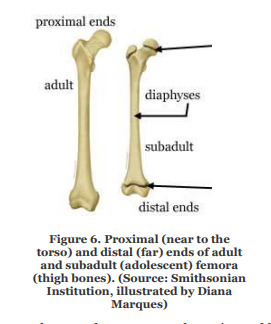
Most archaeologists and forensic anthropologists will answer that the pelvic girdle is the best indicator for identifying an individual's age. The pelvis girdle consists of three main bones: hip bone (ilium, ischium, pubis), sacrum and the coccyx. With this, we look at the level of maturity of bone growth to make an educated guess. This can be identified by the bone's state of fusion. Depending on the identification of the individual, the pubis may fuse or grow robust. If the femur is present with the pelvis girdle, then the collected data becomes stronger. The femur is measured in height from the neck to the head, then the shaft alone to provide an idea of one's stature. All of these together create a plausible stature for one's growth and maturity.
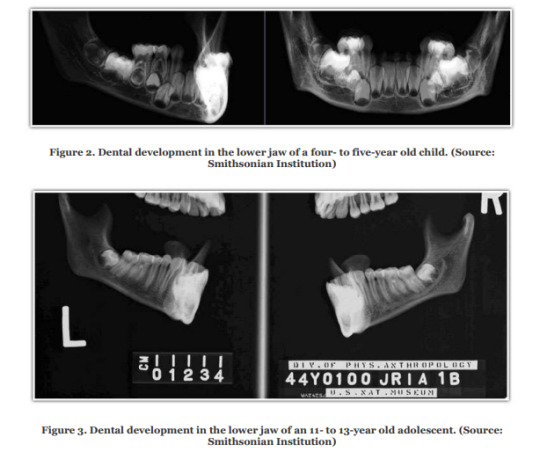
The mandible is touch-and-go. I’ve shared in the past that teeth can provide an idea of an individual’s weight, social/economic status, stature, left/right dominance, and types of bite when chewing food. The state in which teeth grow in can give us an indication of age. This is just as good as observing one's age with a pelvis girdle. If not, maybe a bit better! However, this only works if there's a certain amount of teeth present and a record of growth is present. We look at an individual’s molars and premolars in order to determine a rough estimate in age. On average, wisdom teeth come in between the ages of 17 to 25 (Renton et al., 2016). Some are late bloomers, others are early birds. X-Rays can help us identify where the teeth are currently and provide a projection of when they'll appear. As long as there is recorded data on how teeth grow and when they come in, it's easy to determine how old someone is.
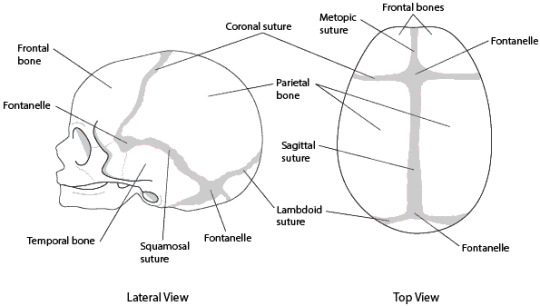
Finally, we have the calvaria. For the sake of sanity, I will be referring to this as the “cranial cap." This is the top crown of the head with four major bones that shapes the skull. These bones feature the frontal bone, two parietal bones, and one occipital bone. Along the top of the cranial cap we see these squiggles that separate the bones. These are called “sutures.” Sutures can be defined or barely visible due to the state of mend. Through maturity, these bones mend together to create one bone rather than four. These are not signs of damage done to the head, these are signs that show the state in which a child is growing (Warren et Al., 2012). Sutures are a result of an infant's cranial cap fusing together after being birthed. To put simply; the less defined they are, the older that one supposedly is.
OBSERVATION:
As explained in the “Methods,” section, the cranial cap and mandible appear to be a more logical choice when determining Sonic’s age. I am fortunate for the small crumbs given to me from Sonic CD (1994) and Sonic Unleashed (2008). Both of these provide a good picture of Sonic’s biological estimation on age range. I will not be referring to Evan Stanley’s interpretation of his skull. I do not feel that this is necessary, nor canon. This is Ms. Stanley’s interpretation of Sonic anatomy and fan art.
Mandible
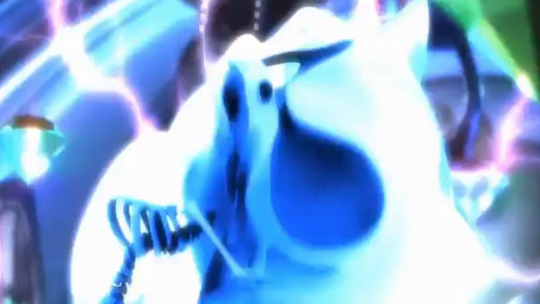

Right before it's initial release, Sonic Unleashed's opening cinematic was meant to have a darker tone. Initially, the beta version of the scene depicted Sonic being electrocuted in his super form as he's infused with Dark Gaia energy. This scene was also meant to show his skeleton during the painful transformation. Screenshots of the scene are available online. One particular shot shows enough of Sonic's mandible to identify canine, incisor, premolars, and molars. The image above shows that at least ONE wisdom tooth (third molar) is present. Other signs of third molars is not visible due to angle of shot.
In the animated short titled "Night of the Werehog," we're given a good shot of Sonic opening his mouth and showing his fangs. Way in back are three molars (Image has been brightened and highlighted for view). Since one confirmed wisdom tooth is present in the shot, we could infer that Sonic is at least 17-years-old. Not fifteen. Seventeen is the average age for when we see wisdom teeth begin to grow in.
Cranial anatomy/Cranial Cap
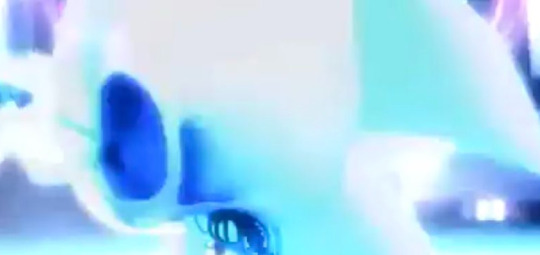

In Sonic CD (1993), there is a particular scene where Sonic is electrocuted once again. [Fun Fact: one would not be able to see Sonic's skeleton if electrocuted, you'd see his nervous system instead.] Once again, players are able to see Sonic's entire skeletal system. The problem with this example is that it's pixelated art. Pixel art can range from being detailed works of art, or simplified icons that have symbolic meaning. The skeletal anatomy that we see of Sonic in the CD title is not enough for me to draw a conclusion on how old he is. It's merely a representation of a shock taking place.
For a better representation of a cranial cap, we should refer to the beta version of Sonic Unleashed once more. Sutures on Sonic's skull are a tad harder to make out in the image due to how saturated the scene is. A wonderful example of seeing Sonic's cranial suture can be seen at a side profile. The one closes to the sphenoid bone (eye socket) is a cranial suture. Again, this one is up for debate since the quality of the photo is poor. For the sake of sanity, we'll claim that this is a suture.
Examining the suture, we see that it's less defined. This does not mean that the sutures disappear completely. As we grow older, the bone fuses. If Sonic were younger, then the sutures would be more defined. Here, they've fused quite finely. This leads me to believe that he is out of the child phase (1yr to 12yrs) and into Adolescence (13yrs to 17yrs).
Femur & Pelvic Girdle/Pelvis
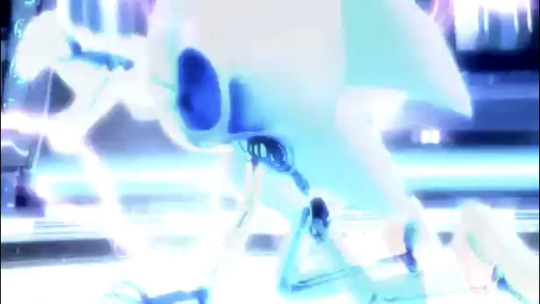
Generally, there's a model that can be used to display what a mature individual looks like compared to an adolescent when observing a pelvis girdle. Here, it's a bit harder for me to make an assumption because there's a lacking model of what adults and adolescents look like for anthropomorphic animals. This is a query that I've faced when trying to examine Sonic's skeletal anatomy. Of course, measuring a femur and weighing the density of bone could provide some insight on Sonic's estimated age (Shipman, 2018).
In a real world, that would require lots of money and an actual subject that is the equivalent to Sonic's height and weight (canonically, Sonic is 100cm tall and weighs 35kg). You'd then have to figure how much the bone density changes when someone stands up, sits down, lies down, and so forth. Plus, I don't know Sonic's level of body fat to even begin doing a simple calculation. It's a bit of a headache the more that this is tackled upon. That is a lot of data to collect for a talking blue hedgehog.
Measurements of the femur to the pelvis are fine and dandy, but the data is inconclusive. A simple measurement could be off by a single year or three. Once more, it's kind of hard to capture a crisp picture of the pelvis girdle and femur. I feel that gathering data from this perspective is inconclusive.
Discussion:

I must stress that this isn’t meant to be as in-depth or taken seriously. I must also stress that many social groups around the world have different approaches and cultural definitions to what it means to be a teenager. This is a common topic that I try to educate people about when it comes to cultural norms and social practices. Most western cultures consider that teenagers starting at 13yrs of age and ending at 17yrs of age before becoming a legal adult at 18yrs. Some western cultures even extend the age gap to 13yrs to 19yrs. Cultural and social teachings of how we define what is and isn’t a teenager could easily be defined as “adolescence.” We refer to this as adolescence, it allows us to have an extended age gap of 13yrs to 19yrs (Ember et Al., 2017). It all narrows down to how these practices and beliefs are taught within one’s community.
Some fans headcanon Sonic and his friends are growing older, others younger… or even stick with the Western interpretation of him being 15-years-old. Sonic's age has always been ambiguous, meaning that it's not narrowed down to a specific number. The query that I've faced is that there is a lack of official material that displays this easily. The information that I have shared in this post works on a plausible theory that he's older than 15. However, gaming manuals have almost always made it a point hat hes 15/16 (Sonic Heroes Game Manual, 2003). The point now is that he's a teenager. He will always be viewed as a teenager in this canon. To me, Game!Sonic is definitely older. He clearly shows characteristics of being an older version of himself (the strongest supporting evidence here being his teeth), but still within the range of being classified as a "teenager."
My goal here is to not enforce one way of thinking. The most that I can do is supply the data and leave you, the reader, to make your own conclusions. I hope that this answers your question, my dear.
#I’ve been… so scared to answer this. I am very conscious of this being a hot/controversial topic as of late. Please don’t cancel me👉🥺👈#mystery anon#off topic#I am an anthropologist#I am an archaeologist#sonic#sonic the hedgehog#sonic movie#sonic unleashed#trigger warning: skull#tw: skull#tw skull
61 notes
·
View notes
Text

3D visualizations reveal that molten sulfide could percolate through solid rock to form a planetary core
A new NASA study reveals a surprising way planetary cores may have formed—one that could reshape how scientists understand the early evolution of rocky planets like Mars.
Conducted by a team of early-career scientists and long-time researchers across the Astromaterials Research and Exploration Science (ARES) Division at NASA's Johnson Space Center in Houston, the study offers the first direct experimental and geochemical evidence that molten sulfide, rather than metal, could percolate through solid rock and form a core—even before a planet's silicate mantle begins to melt.
The work appears in Nature Communications.
For decades, scientists believed that forming a core required large-scale melting of a planetary body, followed by heavy metallic elements sinking to the center. This study introduces a new scenario—especially relevant for planets forming farther from the sun, where sulfur and oxygen are more abundant than iron.
In these volatile-rich environments, sulfur behaves like road salt on an icy street—it lowers the melting point by reacting with metallic iron to form iron-sulfide so that it may migrate and combine into a core. Until now, scientists didn't know if sulfide could travel through solid rock under realistic planet formation conditions.
The study results gave researchers a way to directly observe this process using high-resolution 3D imagery—confirming long-standing models of how core formation can occur through percolation, in which dense liquid sulfide travels through microscopic cracks in solid rock.
"We could actually see in full 3D renderings how the sulfide melts were moving through the experimental sample, percolating in cracks between other minerals," said Dr. Sam Crossley of the University of Arizona in Tucson, who led the project while a postdoctoral fellow with NASA Johnson's ARES Division.
"It confirmed our hypothesis—that in a planetary setting, these dense melts would migrate to the center of a body and form a core, even before the surrounding rock began to melt."
Recreating planetary formation conditions in the lab required not only experimental precision but also close collaboration among early-career scientists across ARES to develop new ways of observing and analyzing the results. The high-temperature experiments were first conducted in the experimental petrology lab, after which the resulting samples—or "run products"—were brought to NASA Johnson's X-ray computed tomography (XCT) lab for imaging.
X-ray scientist and study co-author Dr. Scott Eckley of Amentum at NASA Johnson used XCT to produce high-resolution 3D renderings—revealing melt pockets and flow pathways within the samples in microscopic detail. These visualizations offered insight into the physical behavior of materials during early core formation without destroying the sample.
The 3D XCT visualizations initially confirmed that sulfide melts could percolate through solid rock under experimental conditions, but that alone could not confirm whether percolative core formation occurred over 4.5 billion years ago. For that, researchers turned to meteorites.
"We took the next step and searched for forensic chemical evidence of sulfide percolation in meteorites," Crossley said. "By partially melting synthetic sulfides infused with trace platinum-group metals, we were able to reproduce the same unusual chemical patterns found in oxygen-rich meteorites—providing strong evidence that sulfide percolation occurred under those conditions in the early solar system."
To understand the distribution of trace elements, study co-author Dr. Jake Setera, also of Amentum, developed a novel laser ablation technique to accurately measure platinum-group metals, which concentrate in sulfides and metals.
"Working on this project pushed us to be creative," Setera said. "To confirm what the 3D visualizations were showing us, we needed to develop an appropriate laser ablation method that could trace the platinum group elements in these complex experimental samples. It was exciting to see both data streams converge on the same story."
When paired with Setera's geochemical analysis, the data provided powerful, independent lines of evidence that molten sulfide had migrated and coalesced within a solid planetary interior. This dual confirmation marked the first direct demonstration of the process in a laboratory setting.
The study offers a new lens through which to interpret planetary geochemistry. Mars in particular shows signs of early core formation—but the timeline has puzzled scientists for years. The new results suggest that Mars's core may have formed at an earlier stage, thanks to its sulfur-rich composition—potentially without requiring the full-scale melting that Earth experienced. This could help explain longstanding puzzles in Mars's geochemical timeline and early differentiation.
The results also raise new questions about how scientists date core formation events using radiogenic isotopes, such as hafnium and tungsten. If sulfur and oxygen are more abundant during a planet's formation, certain elements may behave differently than expected—remaining in the mantle instead of the core and affecting the geochemical "clocks" used to estimate planetary timelines.
This research advances our understanding of how planetary interiors can form under different chemical conditions—offering new possibilities for interpreting the evolution of rocky bodies like Mars. By combining experimental petrology, geochemical analysis, and 3D imaging, the team demonstrated how collaborative, multi-method approaches can uncover processes that were once only theoretical.
As NASA prepares for future missions to the moon, Mars, and beyond, understanding how planetary interiors form is more important than ever. Studies like this one help scientists interpret remote data from spacecraft, analyze returned samples, and build better models of how our solar system came to be.
IMAGE: NASA's Perseverance rover was traveling in the channel of an ancient river, Neretva Vallis, when it captured this view of an area of scientific interest nicknamed "Bright Angel" – the light-toned area in the distance at right. The area features light-toned rocky outcrops that may represent either ancient sediment that later filled the channel or possibly much older rock that was subsequently exposed by river erosion. Credit: NASA/JPL-Caltech
4 notes
·
View notes
Text
Forensic Science - History and Evolution
Forensic Science, in other words criminalistics or criminology, involves the implementation of scientific techniques and protocols that assists in decision making in the field of criminal and civil law. This broad field of study involves different scientific practices such as the analysis of DNA, fingerprints, blood stain patterns, firearms, ballistics, toxicology, etc. Throughout the investigation, scientists gather, examine, and analyze the different evidences that has been provided to them. Some scientists prefer to travel to the crime scene for a better perspective and to collect the evidences by themselves, while others take up the role in the laboratory for a better analysis and research on the evidences provided to them by some other individual. Apart from being experts in the laboratories, forensic scientists also act as expert witnesses in the court of law working for either the prosecution or the defense.
The main essence of forensics lies in the investigation of crime and crime scene. Although, have we ever thought about the history of forensic science? Its origin? When were the techniques first came into use? OR, who were the first personnel to excel in this field of study? We have…. right? Presenting a brief history of forensic science.
The history of forensic science needs exploration as this topic itself was not discussed as much in the earlier times as it is now. The word forensics has originated from the Latin word “forensis” which means forum. Forensics is usually used in collaboration with a field of authority that is associated with the legal system. In a nutshell, forensic science is the application of scientific methods and techniques to matters under investigation by a court of law.
In ancient period, the style of death was naturally assumed by the condition and the site of death of the victim or the dead body. Let us say, a man had been found in a water body. It was usually assumed to have been drowned, while a man lying in a bloodied condition along the road side was assumed to have fallen and perhaps be dragged by a horse. Suspicion toward the motive of murder and the statement of the layman against a possible murder outweighed all other facts and when all else failed, heinous torture was done to get possession of a proper confession.
However, the exact origin of forensic science is still undetermined. Majority of the experts have concluded presumptively, the origin was in China in the 6th century, or maybe earlier. The belief of this conclusive statement is based on one of the earliest known mentions of the concept, found in a book titled “Ming Yuen Shih Lu”.
During the 7th century, fingerprints were put to use as a method of identification. According to the studies, a vendor was able to recognize a specific customer who was indebted to him by apprehending his fingerprints on a bill. A judge in that case, was convinced of the prints as inarguable authentication, and set an example of forensic science in action. In the year1659, the word “forensic” found its way in the Merriam- Webster Dictionary.
After publishing Traite de Poisons int the year 1813, Professor Mathew Orfila, a specialist in medicinal chemistry, was renowned as the Father of Toxicology. He is the first, who’s known to use a microscope for the assessment of blood and semen stains. Moreover, two Italian surgeons, named Fortunato Fidelis and Paolo Zcchia, laid the foundation for modern pathology. They were successful in doing so by studying the changes in the body’s structure because of sickness. The applicability of forensic science increased with the emergence of the 17th century along with other scientific developments.
In 1880, fingerprint analysis was used to link incidents to suspects, that marked a step forward in the evolution of forensic science. Henry Faulds and William James Herschel proposed a ground breaking theory on the uniqueness of fingerprints, which made fingerprint analysis possible. This study attracted huge support from worldwide experts, and it was ultimately recognized as the crucial evidence during court proceedings. During the crime scene investigations, Francis Galton and Edward Henry, put into practice, the technique proposed by Herschel. Sir Francis Galton first invented the technique to classify fingerprints.
The inspection of evidence from firearms such as guns, which is used in crime scene investigation is known as forensic ballistics. When a bullet is fired from a gun, microscopic markings of gunpowder are left on the bullet as well as the case of the cartridge. The markings of the gunpowder left on the bullet, act as aggravated fingerprints. Henry Goddard of Scotland Yard in 1835 was the first person who used the ballistic analysis to link a bullet ta murder weapon.
The field of study that deals with how chemicals, substances and situation can harm living organisms specifically humans and animals is regarded as Toxicology. It revolves around studying the symptoms, detection and treatment of a human/animal body which is exposed to rigorous poisoning. In 1838, a Scottish chemist named James Marsh successfully applied the techniques of toxicology. Later on, this method was proven effective during the investigation of a murder case.
The development of newer forensic procedures for evaluating evidence exploded in the early 20th century. As a result, law enforcement authorities realized the need for specialized forensic investigator teams to gather and analyze evidences. Edmond Locard, “Sherlock Holmes of France” was a renowned forensic scientist of the 19th century. Locard is considered as the innovator in this field of research and had made significant influence in the development of criminalistics (along with the partnership of Joseph Bell and Archibald Reiss). Locard’s Exchange Theory, a basic principle he developed, is crucial for today’s law enforcement. In his theory, Locard stated that “when a person comes in contact with an object or another person, a cross-transfer of physical material can occur”. The world’s first forensic laboratory in Lyon, France established in 1910, had Edmond Locard as its director. His writings include no reference of “exchange principle”. However, he did say, “It’s impossible for a criminal to act without leaving signs of his or her presence, especially given the severity of the crime”. The term “PRINCIPLE OF EXCHANGE” first appears in 1940 in the book named Police and Crime Detection, and it was developed from His observations. Furthermore, there have also been many innovations during this period in some specific areas. For example, Karl Landsteiner was awarded the Noble Prize for his work on blood groups in 1930, as he was the first to divide human blood groups into four different categories. The study of blood further helped investigators in proceeding with their analysis of the crime scene. Scientists at the Aerospace Corporation in California in the 1970s, developed a scanning electron microscope method for the easy detection of gunshot residues. Other tests to check saliva, sperm, urine and sweat were developed in the mid-1990s.
The growth of forensic science has been aided by increased computational capacities. Photographs which are of high resolution and are essential for the proceedings of a murder case can now be saved and processed more easily due to increased computational and storage capacities. Criminology mostly works with the idea that resolves around the moto - “every case is different”. This idea generates a primitive conflict between researches focused on generalizable theories and professional crime reconstruction practices. On that account, it is essential to get hold of a long-term perspective while considering the probable opportunities and recommendable future directions in the field of forensics.
While, it can be seen that the application of physical, natural, and social disciplines to legal issues is referred to as forensic science and the history of this field is very old. The first application of this field goes back to the history of ancient Rome, Greece and Egypt. The previously applied basics of criminology have not changed over the years and while it can answer how of a crime being committed, it can never solve the why. Analyzing a crime scene includes the intervention of human factors as well as scientific methods and procedures to get to the root of the incident that has occurred. While the evidence has the voice of their own, human intervention translates those evidence in the court of law ensuring justice is always served.

4 notes
·
View notes